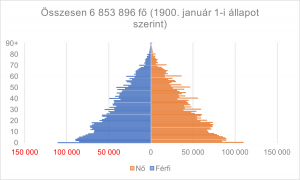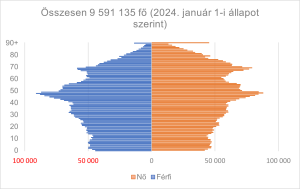
Hungary had the sixth highest fertility rate in the European Union in 2022.Continue reading

A recent article from the Oeconomus Economic Research Foundation looks at the challenges of an ageing society and the link between the decline in the working age population and countries’ competitiveness in the global market, with a focus on the situation in Hungary. Developed countries, including those of the EU, are looking for answers to this demographic problem.
Although the world’s population exploded in the 20th century, we are now faced with a slowdown in population growth. However, the slowdown and growth are disproportionate: births are falling drastically in industrialized countries, while they are still rising sharply in Africa.
According to United Nations forecasts, the number of people over 65 will reach 1.6 billion worldwide by 2050. In Europe, the number of older people will exceed the number of people under the age of 20 by 2030. The median age of the world’s population is currently 30, but will rise to 36 by 2050.
By 2050, three quarters of countries, i.e. 87 percent of the world’s population, will be “old” or “ageing.”
Hungary is no exception to the trend in the developed world, where the challenges of a declining birth rate and an ageing society are becoming increasingly evident. The two age groups below illustrate how the proportion of older people in the total population has changed since 1900.

Population of Hungary by gender and age on January 1, 1900. Female/Male (KSH)

Population of Hungary by gender and age on January 1, 2024. Female/Male (KSH)
The family policy measures of the last 10 years have eased the demographic pressure, but according to the Hungarian Central Statistical Office (KSH), if the total fertility rate had not moved from the 2011 level (1.23) in a positive direction, 178,000 fewer children would have been born between January 1, 2011, and January 1, 2023.
Hungary is in the middle of the EU in terms of both the proportion of people aged 65 and over and the median age.
Hungary has one of the lowest dependency ratios in the European Union, but as the proportion of elderly people increases in the EU, so does the proportion in the country. From 31.9 percent in 2023, to 45.5 percent in 2050, the ratio will change from 3.1 elderly dependents per working-age person in 2023, to 2.1 in 2050.
Trends suggest that fertility rates will not rise in advanced economies, but life expectancy will increase. Retirees are living longer, but the number of children being born will not be enough to compensate for the number of older people. The UK’s Office of Budget Responsibility wrote in its July 2018 report that “demographic change is one of the key pressures on public finances.”
Indeed, demographic trends are putting increasing pressure on public policy, fiscal and monetary policy, and the labor market,
the article points out.
The overall impact of ageing on economic growth and productivity also depends to a large extent on the response of firms. Digitalization and automation increase productivity and can to some extent replace the living workforce, but this depends on the ability of firms to finance the necessary investment and the availability of a skilled workforce that is adept at new technologies.
As for the solution, in June 2023, the European Council asked the European Commission to develop a proposal to address demographic challenges, in particular their impact on competitiveness. The proposal was adopted by the European Commission in October 2023. The proposal is based on four pillars:
Oeconomus notes that the demographic toolbox is expected to be further developed during the Hungarian EU Presidency. This would fit well into the program of the Hungarian EU Presidency, which could include addressing demographic issues at the EU level as one of its priorities, and shedding light on the links between demography and competitiveness, the article concludes.
Via Oeconomus, Featured image: Pixabay